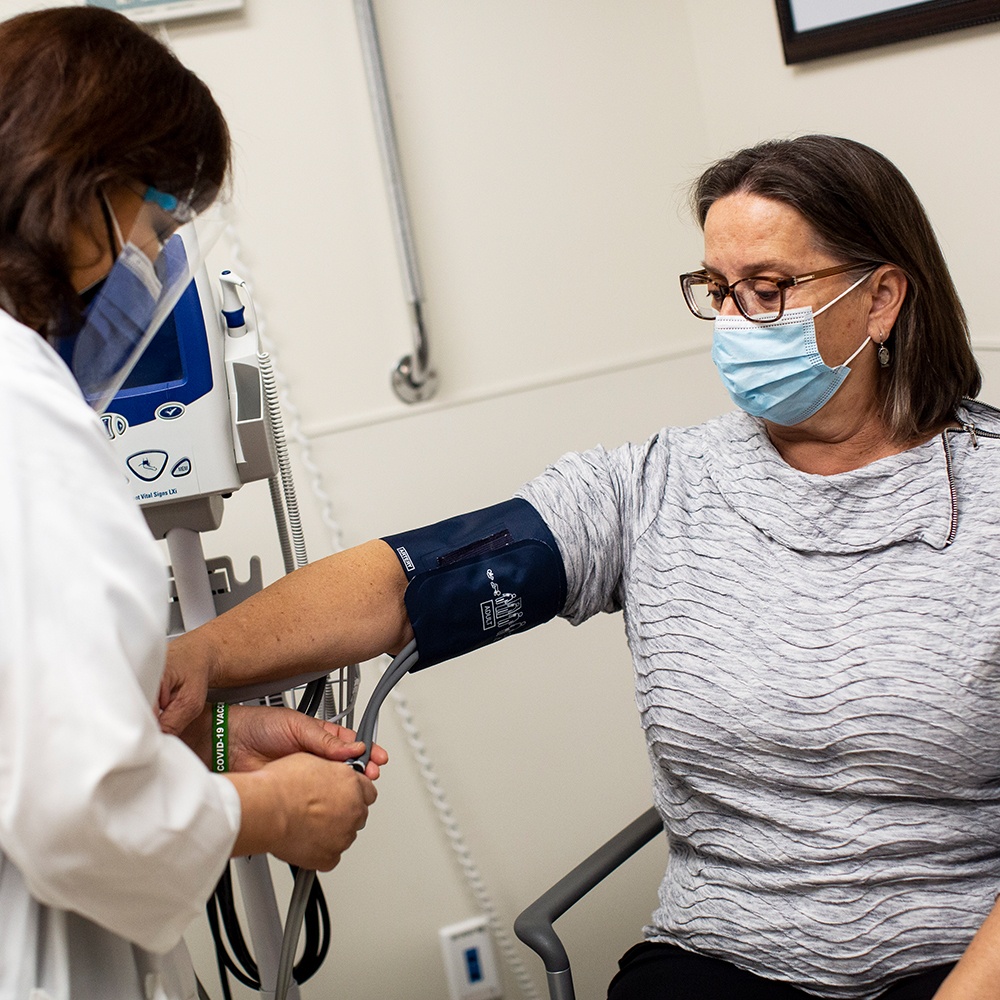Aortic Stenosis (heart valve disease)

Overview
What is Aortic Stenosis?
Aortic stenosis, also called aortic valve stenosis, is when your heart’s aortic valve narrows and prevents the valve from fully opening. This reduces, or blocks, blood flow from your heart into the main artery (aorta) to your body. The aortic valve is the last of four valves that blood passes through before leaving the heart with oxygenated blood. When this happens, your heart has to work harder to pump blood to your body and eventually limits the amount of blood it can pump. This can possibly weaken your heart muscle and if left untreated can lead to serious heart problems.
If you have signs or symptoms of aortic stenosis, or have concerns about it, you should contact your Saint John’s Physician Partners for diagnosis and treatment.
There are many causes of aortic stenosis, including:
Congenital heart defect
This defect may not cause problems until adulthood
Older age
puts you at a higher risk
Calcium buildup
With age, heart valves may accumulate calcium deposits that result in stiffening of the cusps of the aortic valve
Rheumatic fever
A complication of a strep throat infection that may result in scar tissue forming on the aortic valve
Cardiovascular risks
Such as diabetes, hyperlipidemiaand hypertension
Chronic kidney disease
places you in a higher risk category
Radiation therapy
History of radiation therapy to the chest
Symptoms
Aortic Stenosis Symptoms
Aortic stenosis ranges from mild to severe. Because it can take a long time for symptoms to be noticeable, gradual signs of a weakening heart may not be experienced for many years. The heart weakening effects of aortic stenosis can lead to heart failure. Signs and symptoms may include:
Risks
Aortic Stenosis Risks and Complications
Aortic stenosis can cause serious complications including:
- Heart failure.
- Stroke.
- Blood clots.
- Bleeding.
- Arrhythmias, which are abnormal heart rhythm.
- Infections, such as endocarditis, an infection of the inner lining of the heart.
- Syncope (losing consciousness)
- Sudden death

Diagnosis
Aortic Stenosis Diagnosis
Many people may not know they have aortic stenosis until a routine medical exam discovers it. To diagnose aortic stenosis, your doctor will review your signs and symptoms as well as your medical history, followed by a physical exam. Your doctor may order the following tests:
Echocardiogram
a test that uses sound waves to produce video images of your heart in motion
Electrocardiogram (ECG)
measures the electrical activity of your heart
Chest X-ray
to help determine if your heart is enlarged, and if there may be other associated findings
Exercise or stress tests
to check whether you have signs and symptoms during physical activity
Right and left heart catheterization
which utilizes hemodynamic measurements and fluoroscopic imaging to determine the severity and significance of aortic stenosis
Computerized tomography (CT) scan
that creates detailed images of your heart and heart valves
Treatments
Aortic Stenosis Treatments
Treatment for aortic stenosis will depend on the severity of your condition. If your symptoms are mild or you aren’t experiencing symptoms, your doctor may monitor you with regularly scheduled appointments. Your doctor may recommend the following for aortic stenosis:
Working with your doctor, these lifestyle changes can help you better manage your aortic stenosis:
- Eat a heart healthy diet that’s low in salt.
- Limit alcohol.
- Quit smoking.
- Regular physical activity.
- Manage stress.
- Take your medication properly.
- Follow your doctor’s recommendations.
Medications your doctor may prescribe include:
- ACE inhibitors or angiotensin receptor blockers that can open blood vessels more fully.
- Beta-blockers that can slow your heart rate.
- Diuretics (“water pills”) that lessen the amount of fluids in your body and reduces stress on your heart.
- Antiarrhythmic drugs that treat problems with heart rhythm.
The only effective treatment for aortic stenosis is a procedure or surgery, including:
- Balloon valvuloplasty, where your doctor inserts a catheter with a balloon on the tip through an artery in your groin and guides it into the aortic valve. The doctor then inflates the balloon to expand the opening of the valve. However, the valve tends to narrow again and this is often only used for patients who are too sick for surgery or are waiting for a valve replacement. This procedure is only to relieve symptoms and not a permanent solution.
- Aortic valve replacement is when your doctor removes the damaged valve and replaces it with a mechanical valve, which is made of strong, durable material that will last throughout your life, or with a bioprosthetic valve, made from cow, pig or human heart tissue.
There are two types of aortic valve replacement surgeries:
- Transcatheter aortic valve replacement (TAVR). In this procedure, your doctor will insert a catheter in your leg or chest and guide it to your heart. A replacement valve is inserted through the catheter and inserted in your heart. Once the valve is inserted in your heart, your doctor will remove the catheter. This procedure is less invasive than opening the chest and may shorten recovery time.
- Open-heart surgery is when your doctor makes an incision in your chest to access your valve and replace it.
Your Saint John’s Physician Partners doctor will discuss your treatment options as well as benefits and risks.
Specialists